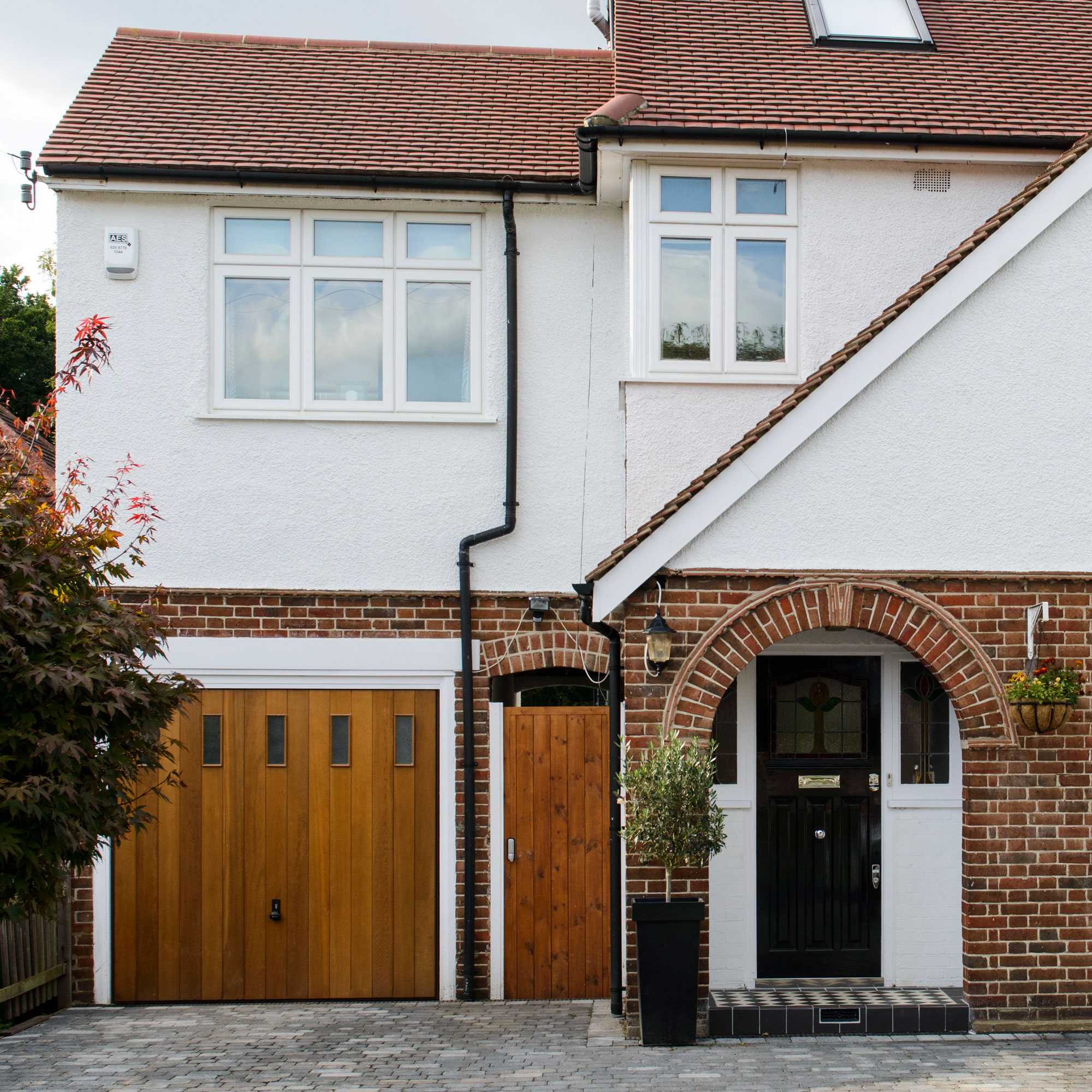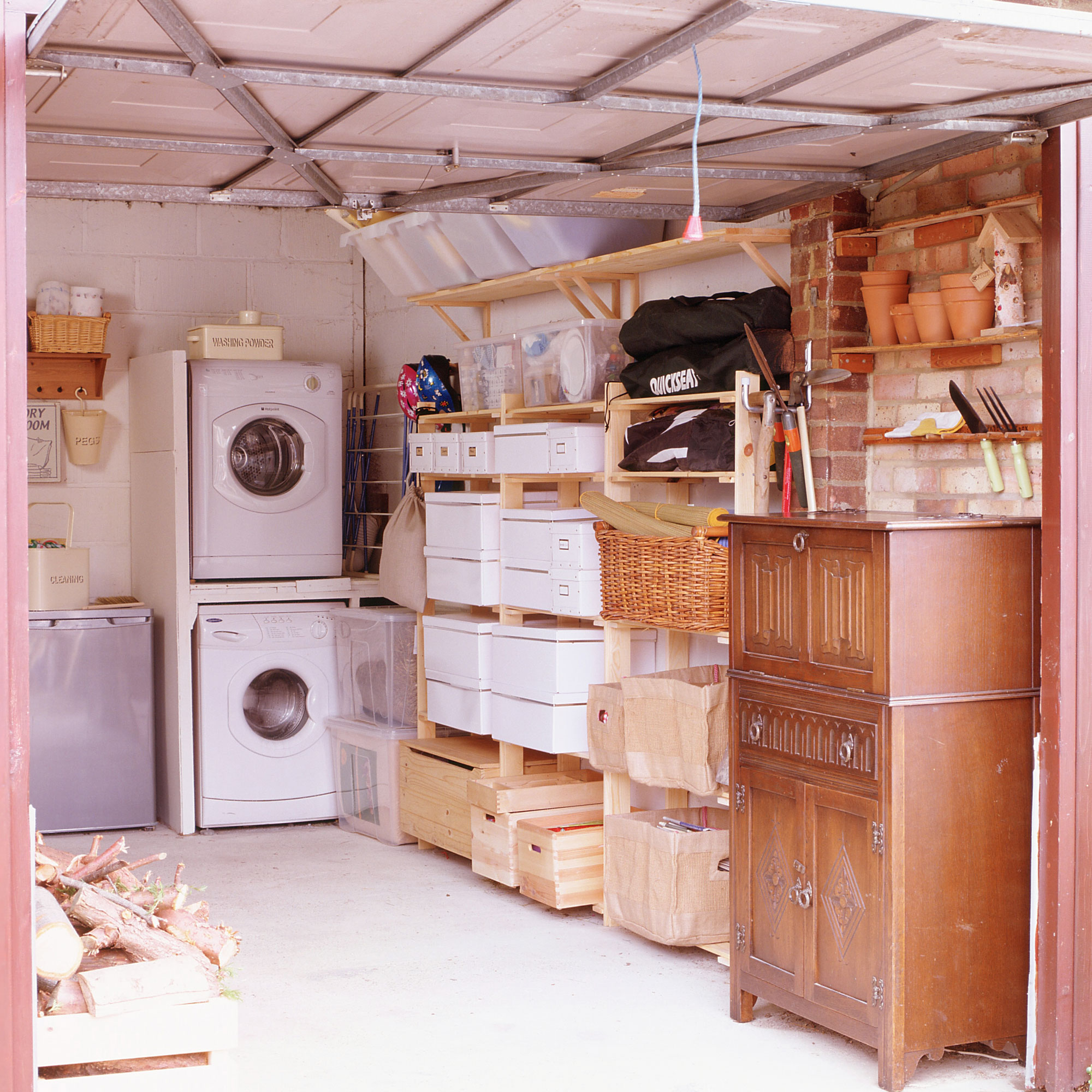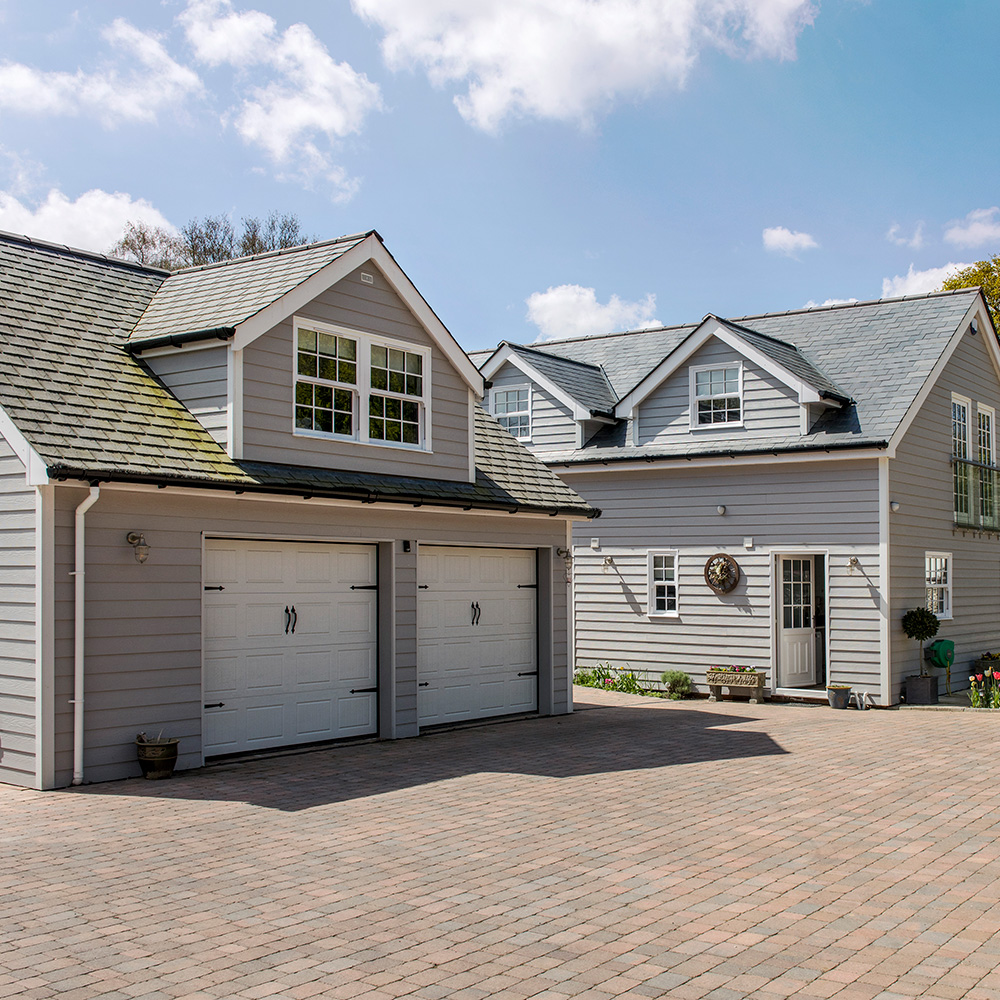Types of garage door insulation – and why it's a job worth doing
Discover the best ways to insulate your garage door, the dos and don'ts for each option and how much it’s likely to cost

It's worth understanding the types of garage door insulation that can help maintain a warm zone and protect the contents of your garage. Choose correctly, and it will help to reduce heating bills, as well as buffer outside noise too.
But, is insulating a garage door worth it? If your garage is attached to your property, then definitely. When it comes to insulating a home, it's important to be aware that a garage door could be causing draughts into living spaces. Not only will an uninsulated weak spot make your property feel colder (or hotter in the summer), but it will also allow precious heating to leak out. Something you want to avoid with energy costs increasing.
If you’re using the garage for storage or for hobbies, an uninsulated zone will be unpleasant to work in and might even allow damp to affect tools and materials. Is there a room above your garage? If so, that’s likely to get colder than the rest of the house if the space below it is constantly cold.
‘It is vital to not forget the garage,’ says David O’Mara, Marketing Manager at garage door specialist Hörmann UK. ‘More homeowners are using garages as a store or for additional living space, so an insulated garage door helps reduce home heat loss and keeps the temperature at a comfortable level.’
Read this guide to discover the ways to insulate your garage door, whether it’s difficult to do it yourself and how much it’s likely to cost.
Types of garage door insulation

There are several material options for adding garage door insulation. Remember, draught proofing around the edges is another crucial part of the job.
1. Use a reflective foil insulation
Rolls of reflective foil insulation are a good option for standard metal garage doors. They are readily available to buy in local DIY stores and easy to install yourself. Some are even specifically sold as garage door insulation rolls.
Get the Ideal Home Newsletter
Sign up to our newsletter for style and decor inspiration, house makeovers, project advice and more.
‘Reflective foil insulation allows for heat to remain in during colder months while blocking it out during warmer months,’ says Jo Behari, DIY expert and TV presenter. ‘Rolls or sheets of 5mm-thick insulation are the best. These can be cut easily with scissors, are lightweight and easy to fit using tape or glue.’ Some come with a self-adhesive backing for easy install.
- Do look for garage door insulation kits that include everything you need to do the job, you can pick these up from just £30 at Wickes.
- Do seal any overlapping edges to maintain thermal efficiency.
- Don't forget to thoroughly clean and dust your garage door, waiting for it to dry before fitting the insulation.
2. Apply rigid foam insulation
If a reflective foil insulation kit isn’t for you, then you can measure and cut rigid foam to fit to the inside of your garage door. There are various types of rigid foam available in different sizes and thicknesses. This type of material offers good thermal performance, so you can get the job done with relatively thin sheets.
- Do pay careful attention to the measurements when cutting the insulation for garage doors. Be exact to minimise cold spots and keep the door opening as it should.
- Do use foam boards that are thinner than the channels on the inside of your garage door, to make fitting the insulation easier. Try using a foam-safe adhesive or heavy-duty double-sided tape to attach the boards.
- Don't leave your garage or home exposed to fire risk by using an unsuitable foam board. Make sure the product you use is not flammable and is appropriately fire rated.
3. Try batt insulation

These rolls of insulation are soft and usually made from fibreglass or wool. Standard versions might not be the best option for your garage door. Some products, such as the type that you would wrap around ventilation ducts, are thinner and foil-faced. These could work for garage doors. They’re generally cheap to buy, too.
- Do look at how deep the batt is, as most are too thick to make them suitable for the average garage door.
- Don't put mineral wool straight onto a cold metal door and hope for the best. The wool could get damp and could cause condensation and mould.
- Don't use any old tape to secure the insulation – make sure it’s the right adhesive for the product. The manufacturer’s instructions should point you in the right direction.
4. Apply insulating tape to keep out draughts
It’s all very well having a well-insulated garage door, but if the edges of the door allow heat to escape and cold air to leak in, then you’re missing a trick.
‘You can get insulation tape that will allow you to cover over the edges of the garage door so draughts don't come in there,’ says Jo Behari. ‘If you have a large gap under the door you might want to invest in door brush strips that you can nail to the bottom.’
Weatherstrip seals may also be suitable for your garage door. Just be sure to choose versions that are suitable for the door type. For instance, brush excluders, from £6.99, Amazon or wraparound strip seals would work where a roller door meets the floor.
- Do draught proof along the sides, top and the bottom of the garage door to cut out air leakage.
- Don't buy the wrong product; check it’s appropriate for your garage door type, as otherwise you could affect the door’s operation.
5. Buy a replacement door
The best way to ensure your garage door has great thermal performance is to buy a new insulated unit that comes with a guarantee. There are no specific thermal standards that new garage doors need to meet, so look for products with impressive U-values (a measure of heat loss where lower numbers mean better efficiency).
‘Hörmann’s insulated sectional garage door is manufactured from a galvanised sheet steel double skin with a PU foam inset,’ says David from Hörmann UK. ‘The LPU67 design can achieve a U-value of 1.0 W/m²K and a sectional door also provides sealing on all four sides.’
- Do check that the garage door you are thinking of buying offers the level of thermal performance you want.
- Do understand what is included in the price. For instance, does the quote include the fitting cost?
- Don't be tempted to buy a cheap new door and insulate it yourself – for best results, invest in a new unit that offers good performance out of the box.
How much does garage door insulation cost?
If you’re going down the DIY route for installing garage door insulation, then the materials are affordable and readily available from DIY shops and online. ‘Depending on the size of the door, you can probably insulate a standard garage door for between £50-£100,’ says Jo Behari. ‘Insulating draught proof tape is normally around £10 for a 20m roll and brush strips cost around £10 for a pack.’
The price of new garage doors will vary hugely depending on style, material, size and details. ‘Insulated doors can range from £1,500-£9,000 (excluding VAT),’ says Ian Chubb from Deuren. It’s not cheap to buy a new insulated door, but it could be worth it as part of a wider renovation project, or if you want to get maximum efficiency from your garage door.
A key benefit of insulating a garage door in an attached garage is that you’re taking away a weak spot in your home’s thermal efficiency. So, factor in the savings this job could make on your utility bills.
Should I insulate my garage walls, floors and roof?

If you’re investing in upgrading your garage door then consider also insulating other parts of your garage. The level of comfort you want to achieve in your garage will come down to how you use the space.
Most homeowners use their garage for storage – and not necessarily for a car. Exposing the contents of your garage to extreme temperatures could damage them. More people are seeing the benefits of utilising the extra room a garage can offer – whether transforming into a home gym, workshop or other use.
An attached garage’s walls, floors and roof – as well as the through-door between home and garage – are unlikely to be insulated to the same level as those inside your house. So, these elements will also be impacting on your home’s thermal efficiency. Consider external wall insulation as an option.
If you’re thinking about turning your integral garage into a living space, then the thermal efficiency of the whole structure will certainly need looking at. Garage conversions don’t usually require planning permission, but always check with your local authority. Sometimes the local planners will stipulate that a garage door needs to stay in place even if you’re converting the space into a living area. In these cases, garage door insulation is a must.

Rhoda Parry was the Editorial Director of Ideal Home and its sister titles, 25 Beautiful Homes and Style at Home from 2021-2022. She wass also Editorial Director for Gardeningetc, Amateur Gardening and Easy Gardens. Rhoda is a highly experienced editor and journalist and has worked on many women's lifestyle media brands throughout her career. For the last 20 years, she has specialised in homes, interiors and gardens.
-
 Wood drenching is the calming new twist on the colour drenching trend – here’s how to make the look work in your home
Wood drenching is the calming new twist on the colour drenching trend – here’s how to make the look work in your homeIt’s easier than ever to embrace natural materials
By Maddie Balcombe
-
 Aldi is launching a £200 day bed with four different features - its sleek design is suited to the whole family
Aldi is launching a £200 day bed with four different features - its sleek design is suited to the whole familyYou don't want to miss out on this Specialbuy
By Kezia Reynolds
-
 How to set up a drip watering system that saves water and a lot of effort
How to set up a drip watering system that saves water and a lot of effortKeep your plants hydrated (and your water bill down) with this clever garden watering solution
By Natalie Osborn